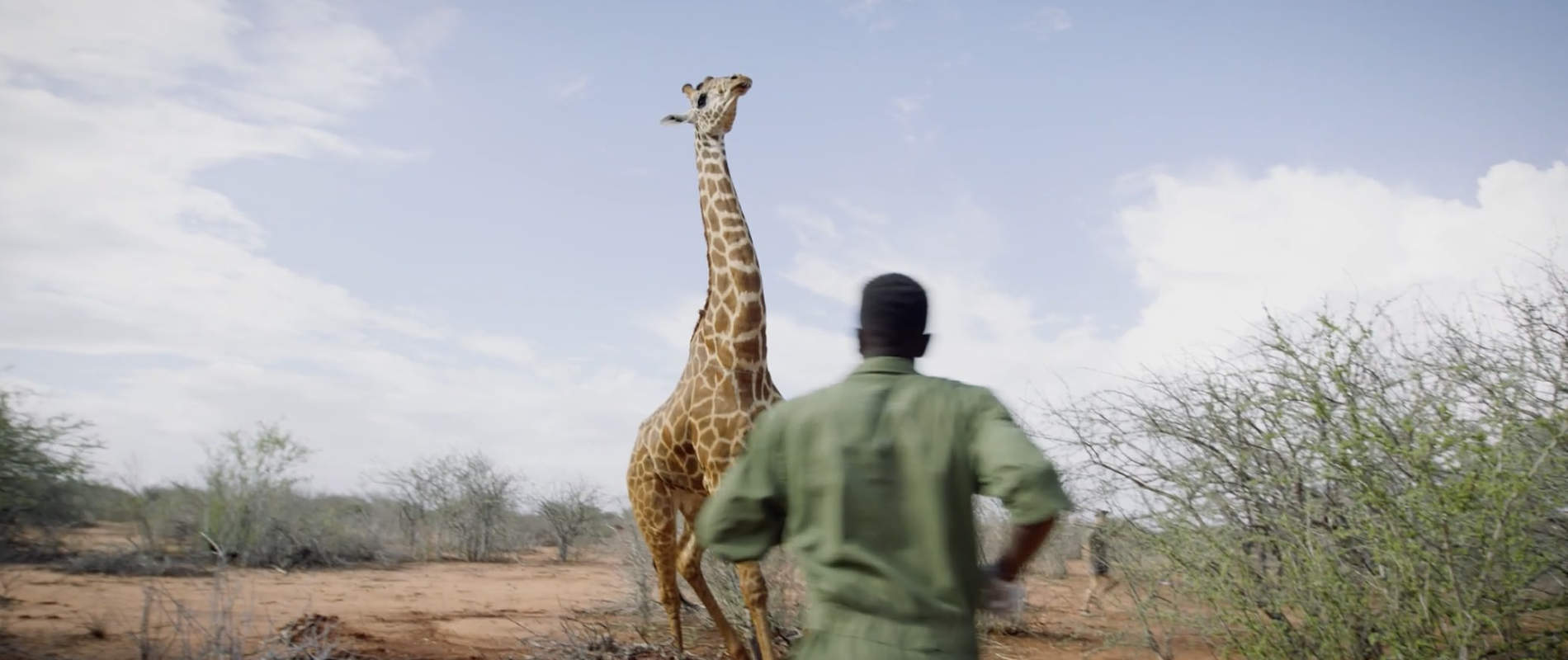Behind every gravity-defying, blink-and-you’ll-miss-it treatment, there are hours — even days — of dedicated field work.
Such was the case with this treatment, which unfolded at rapid speed — but was actually several days in the making.
Earlier this month, field teams spotted a giraffe who appeared to be dragging something behind. This sighting had all the hallmarks of a snare: The simple wire loop is attached to a fixed point. When an animal as powerful as a giraffe becomes entangled in the snare, they often tear the post out of the ground, dragging it behind them.

For several days, ground teams tracked the giraffe for over 20 kilometres, on foot and by car. He eventually disappeared into the vast wilderness that is Kulalu Ranch, bordering Tsavo East National Park.

From there, our fixed-wing and helicopter pilots took up the search. It wasn’t until 6th October that we finally had a breakthrough: During an aerial patrol over Kulalu Ranch, our fixed-wing pilot flew over a large group of giraffes, numbering more than 60. Knowing that the snared giraffe might well be in the mix, he flew low and slow. Sure enough, amidst the towering figures, he was able to spot one individual with a cable snare around his neck, with a length dragging behind.

From there, the treatment unfolded like clockwork. While the pilot kept eyes on the patient, the SWT helicopter collected Dr Limo of the SWT/KWS Tsavo Mobile Vet Unit and flew him to the scene. After darting the giraffe from the air, ground teams moved in to restrain him. Miraculously, the snare had not yet cinched tight enough to leave a wound — although left untended, it was only a matter of time. The team easily cut off the wire and sent the giraffe on his way, snare-free and much relieved.

Snares are emerging as one of the greatest threats to wildlife. Typically set by poachers to catch smaller animals for bushmeat, they are capable of capturing, maiming, and even killing all manner of creatures. While SWT/KWS Mobile Veterinary Units treat the victims of snares, SWT/KWS Anti-Poaching Teams work across Kenya to remove snares from the ecosystem. Last year alone, they recovered and destroyed more than 12,500 snares.
